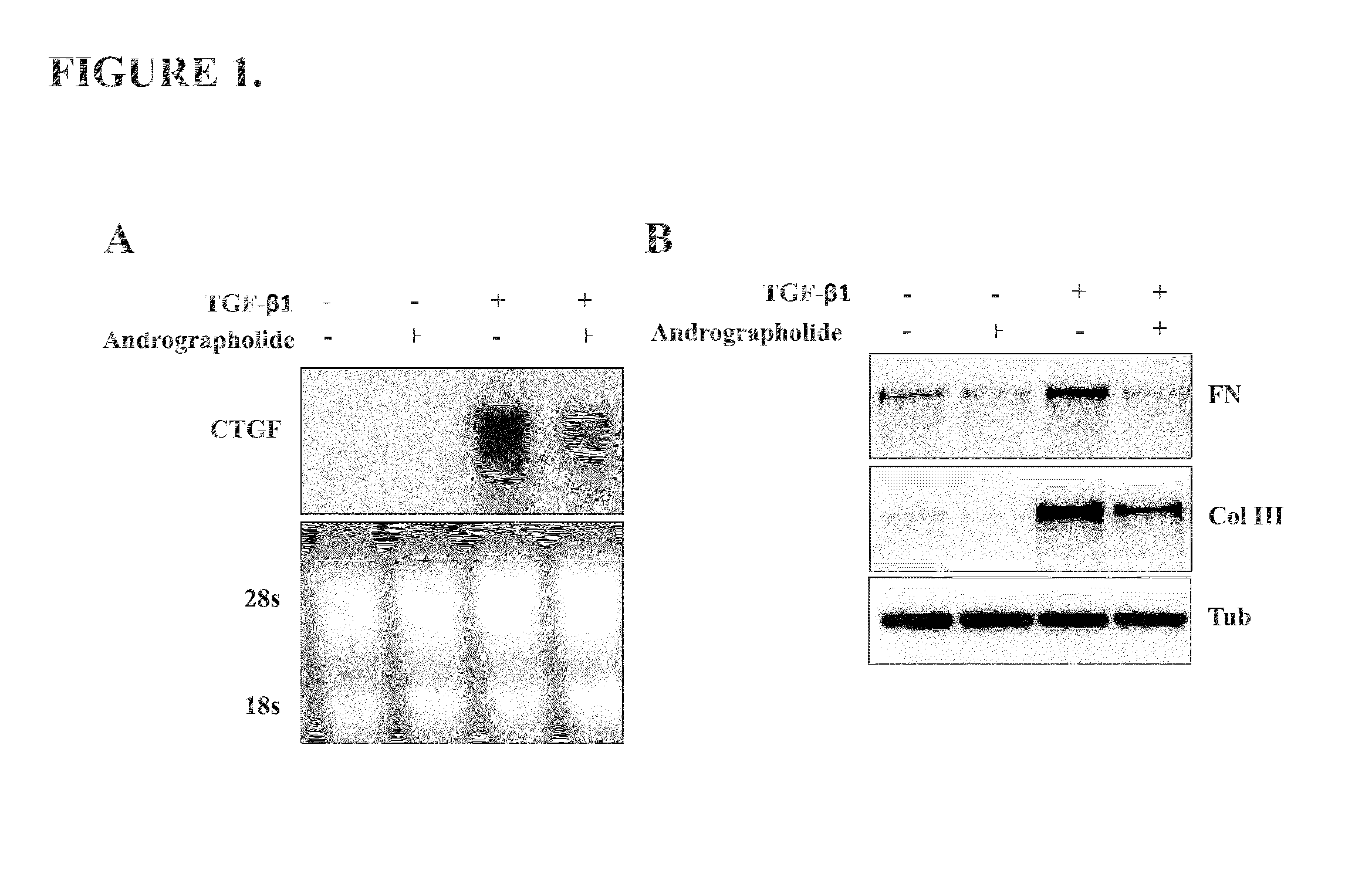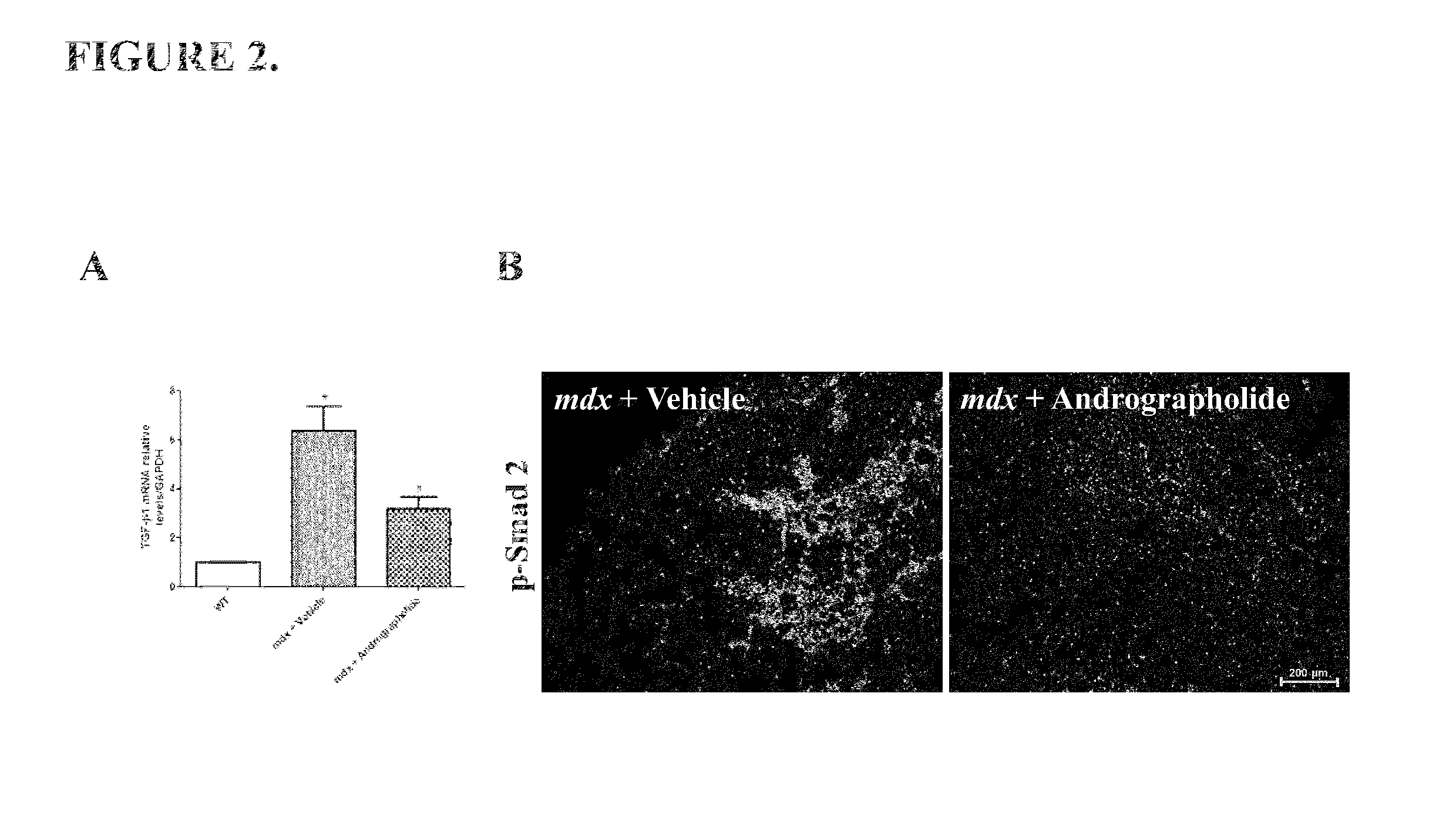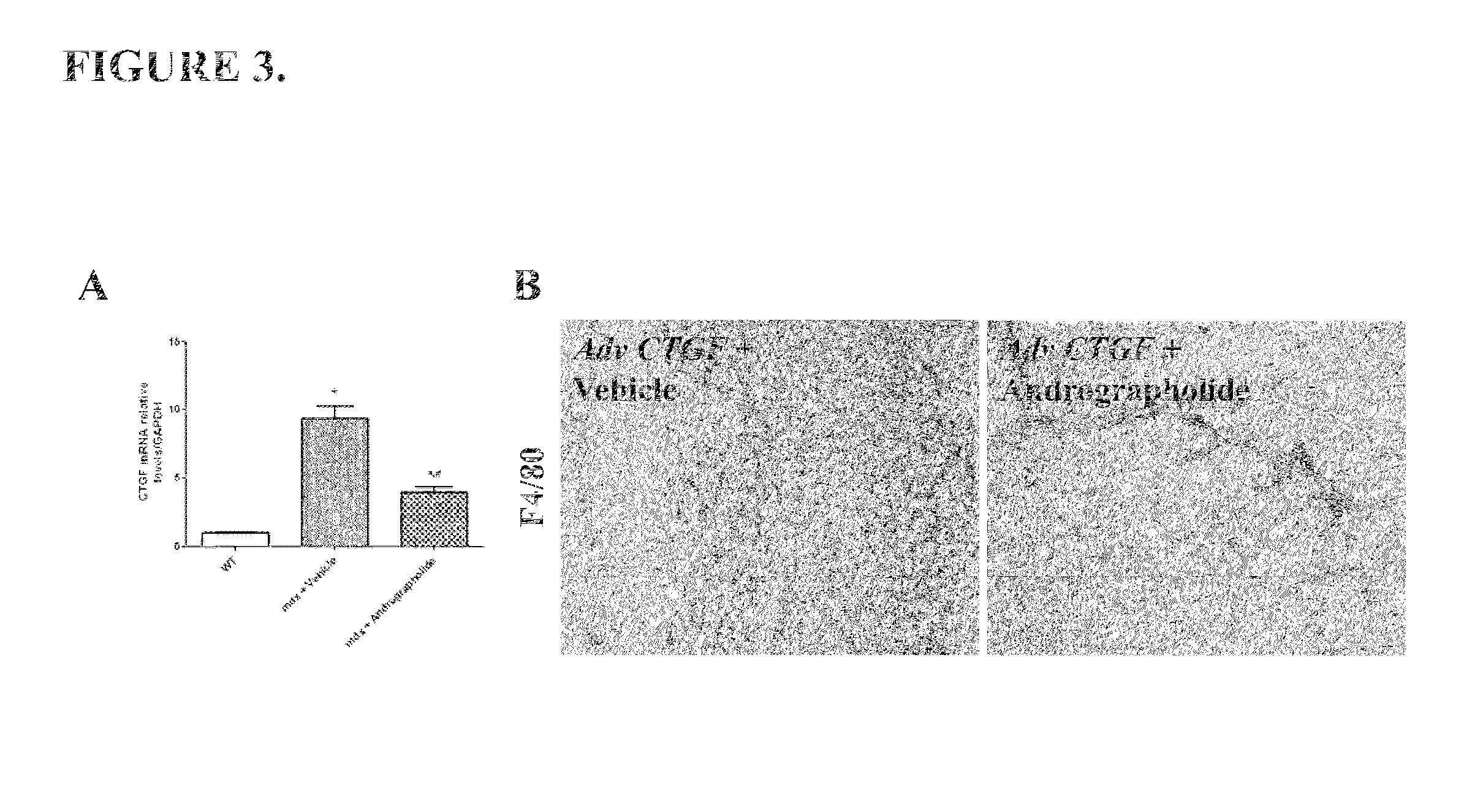Pharmaco-cellular therapeutic method for the treatment of muscular dystrophies
a technology of cellular therapy and muscular dystrophies, applied in the direction of biocide, drug composition, muscular disorder, etc., can solve the problems of affecting the fiber environment, affecting the normal physiology of muscle physiology, and children with this condition
- Summary
- Abstract
- Description
- Claims
- Application Information
AI Technical Summary
Benefits of technology
Problems solved by technology
Method used
Image
Examples
example 1
Effect of Andrographolide on CTGF, Fibronectin and Collagen Type III Induction by TGF-β1 In Vitro
[0047]To evaluate if andrographolide could be an anti-fibrotic factor we determine in vitro the mRNA levels of two known pro-fibrotic factors: Connective tissue growth factor (CTGF) and Transforming growth factor type beta 1 (TGF-β1) (Cabello-Verrugio et al., 2012; Morales et al., 2011). TGF-β1 induces the expression of CTGF in skeletal muscle cells (Vial et al., 2008). The FIG. 1A shows that andrographolide reduced the induction of CTGF expression in response to TGF-β1. A molecular feature of fibrotic diseases is the accumulation ECM molecules such as collagen and fibronectin, both molecules are induced by TGF-β1. FIG. 1B shows that andrographolide decreased both fibronectin and collagen type III protein levels, induced by TGF-β1 in vitro.
example 2
Effect of Andrographolide on TGF-131 in Mdx Mice
[0048]Since we show that andrographolide have anti-fibrotic effects in vitro, we decide to evaluate these results in vivo. We previously showed the antifibrotic effects of andrographolide in vitro, thus we decide to evaluate the andrographolide properties in an animal model of the disease.
[0049]The pro-fibrotic cytokine TGF-β1 is augmented in mdx mice, which is related with the induction of skeletal muscle fibrosis (Andreetta et al., 2006). Therefore we evaluate if andrographolide could modulate the expression of TGF-β1 in vivo. FIG. 2A shows that andrographolide reduced the expression of TGF-β1 in mdx mice.
[0050]The canonical signaling pathway induced by TGF-β1 is through phosphorylation of smad proteins. Thus we evaluate the activity of TGF-β1 canonical signaling pathway by immunofluorescence of phosphorylated smad2 protein (p-Smad 2). FIG. 2B shows that andrographolide reduced the number of positive nuclei for phosphorylated smad2 p...
example 3
Effect of Andrographolide on CTGF Action In Vivo
[0051]Another pro-fibrotic cytokine overexpressed in the skeletal muscle is CTGF (Morales et al., 2011). FIG. 3A shows that andrographolide reduced CTGF expression in mdx mice. Moreover, andrographolide inhibits the pro-inflammatory effects of CTGF in vivo. Overexpression of CTGF by an adenovirus induces inflammation and fibrosis in wild type muscles (WT), showing similar features of dystrophic muscles (Morales et al., 2011). However, andrographolide inhibited these effects. FIG. 3B shows that andrographolide reduced the number of F4 / 80 (a macrophages specific marker) positive cells (Tidball and Villalta, 2010).
PUM
| Property | Measurement | Unit |
|---|---|---|
| Time | aaaaa | aaaaa |
| Time | aaaaa | aaaaa |
| Strength | aaaaa | aaaaa |
Abstract
Description
Claims
Application Information
 Login to View More
Login to View More - R&D
- Intellectual Property
- Life Sciences
- Materials
- Tech Scout
- Unparalleled Data Quality
- Higher Quality Content
- 60% Fewer Hallucinations
Browse by: Latest US Patents, China's latest patents, Technical Efficacy Thesaurus, Application Domain, Technology Topic, Popular Technical Reports.
© 2025 PatSnap. All rights reserved.Legal|Privacy policy|Modern Slavery Act Transparency Statement|Sitemap|About US| Contact US: help@patsnap.com



